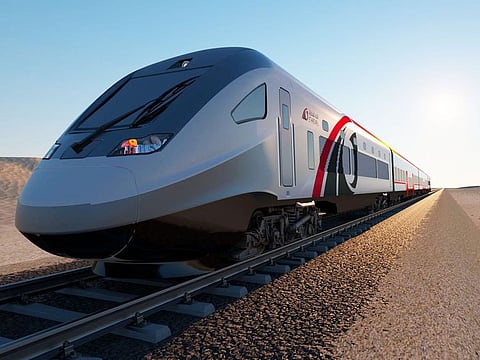Etihad Rail poised to leave a lasting impact
With a focus on sustainability, Etihad Rail is taking the UAE’s message beyond borders

To be tasked with developing one of the largest infrastructure projects in the country is a monumental undertaking. With constructing a 1,200km railway network that spans an entire nation comes intricate and careful planning, collaboration, and studying the various social and environmental impacts of such a vast structure.
Since its inception, Etihad Rail has been conscious of the environmental impact associated with building the National Rail Network, from addressing climate concerns to preserving the UAE’s biodiversity and minimising noise pollution.
As the ‘Year of Sustainability’, 2023 is a critical year for the UAE in addressing climate action, as it also gears up to host COP28 in December. Etihad Rail’s commitment to sustainable development aligns with the UAE’s focus on overcoming environmental challenges, making significant contributions to its Net Zero by 2050 agenda.
Through the UAE National Rail Network, Etihad Rail will contribute to the reduction of CO2 emissions in the UAE’s transport sector by 21% per year, by 2050, which is equivalent to removing 8.2 million tonnes of CO2 emissions annually.

Prioritising wildlife conservation
In fact, as rail is considered one of the most sustainable modes of transport, Etihad Rail is also taking strides towards achieving a greener future globally. According to the International Energy Agency, rail is responsible for 7% of global passenger-km transportation and 6% of freightshipping-km, but only accounts for 3% of transport energy use.
Beyond emission reduction, Etihad Rail has also been a steward in safeguarding the well-being of local communities and preserving the UAE’s wildlife and natural heritage.
This commitment to sustainability is delivered through the company’s Good Neighbour Programme, which is a series of initiatives designed to ensure that the construction and operation of the network adheres to the highest international sustainability standards.
A key pillar of this programme focuses on wildlife conservation and habitat protection. Given that the network has been constructed across various geographic terrains, it has coincided with accessibility to vital habitats, creating some impediments for fauna migration.
As such, Etihad Rail has implemented various measures to mitigate these effects. Through careful studies of wildlife movement patterns and habitat ranges, culverts and bridges were strategically integrated into the network to facilitate safe animal crossings.
Collectively, 16 camel underpasses, 45 gazelle underpasses, and 129 reptile underpasses were built in alignment with camel farms and in areas frequented by gazelles, reptiles, and other mammals. In the case of rare or endangered species, considerable efforts were made to avoid the disruption of their breeding sites, and where necessary, they were carefully extracted and relocated to ensure their protection.
Maintaining ecological harmony does not end at constructing culverts, but also depends on the elements of design. The culverts were sized not only to accommodate the specific needs of wildlife, but also to ensure efficient water flow and drainage.
Furthermore, the structures are regularly monitored and cleared of sand and dirt to maintain accessibility, especially for larger mammals. By continuously analysing data and modifying measures as necessary, Etihad Rail actively diminishes the interferences of the railway network.
As large mammals tend to have wider home ranges, anywhere between 2,000 to 200,000 square metres, they may be impacted by the presence of the railway network.
Focus on sustainability
This type of barrier causes the larger mammals to avoid the area and thus, making them more hesitant to enter the culverts.
As a direct response to this, boundary fences were installed and linked to either side of the culverts to allow for a clear connection to the wider landscape, while creating a “drift fence” effect that guides animals towards the designated crossings.
Etihad Rail’s commitment to sustainability and environmental protection has perpetuated all throughout the early stages of planning the network, to the construction process, and continues to emanate with the current operation of the network.
By prioritising wildlife conservation and preserving the natural wonders of the UAE, Etihad Rail is showcasing the power of responsible and sustainable infrastructure development, proving that progress and environmental stewardship can coexist.
As the UAE places a major focus on sustainability in 2023, Etihad Rail’s efforts are poised to leave a lasting impact, not only locally, but also extending beyond the UAE’s borders.
Adhraa Al Mansoori is the Head of Economic Policies Section at Etihad Rail
Sign up for the Daily Briefing
Get the latest news and updates straight to your inbox



